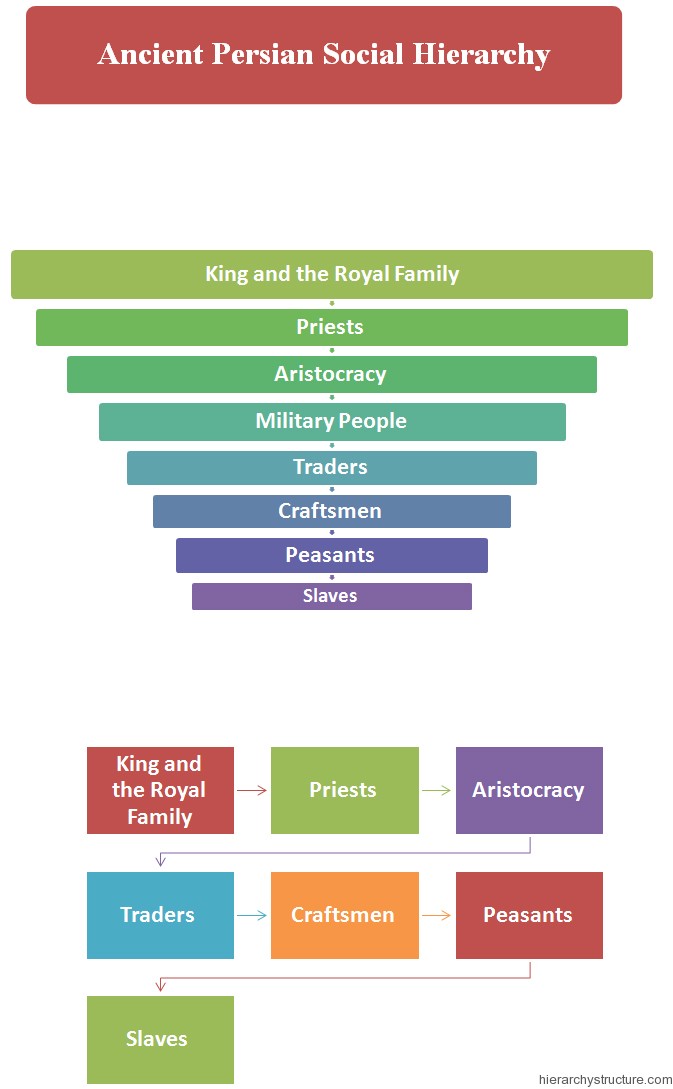Social classes mean the group of people that was divided by society on the basis of any mean like wealth, power, color, place of birth, race they belong to or any other such mean. The social division of people was a prominent factor in the world for many centuries and our history has been greatly influenced by this social evil which considers some people superior over some other people. Persia was also such country which was affected by this social evil. One of the world’s oldest unremitting major civilizations hailed from Persia, with urban and historical settlements. The ancient Persian social hierarchy is described below in a descending order pattern.

- King and the Royal Family – This was the highest power holder social class in the ancient Persian social hierarchy. King was at the top and then came the royal family. Mostly royal family was somehow related to king by blood but in ancient Persia, some kids were also adopted by the king as their son and so they became the part of the royal family.
- Priests – A priest is a person authorized to perform the sacred rituals of a religion, especially as a mediatory agent between humans and one or multiple deities. They also had the authority to interfere or question the decisions of the king. Even their order was considered a holy divinely order since they were supposed to be having positive contact with the deity or deities of the Persia.
- Aristocracy – This level incorporated group of some people, who were famous citizens and these council members used to be advisors of the king and helped and guided him efficiently for the smooth running of the kingdom.
- Military People – Being a part of military was considered a huge honor factor for the Persian people. So next in the ancient Persian social hierarchy is the group of people from Persian military. These people and their families were provided with special benefits and honor by the Persian government.
- Traders – This class belonged to the group of the businesspersons who trade in commodities that were produced by others and in return earned profit. This was kind of middle level people who enjoyed benefits and rights less than some but more than some too.
- Craftsmen – This was a class of people who were skilled manual workers who specialized in making functional and decorative art pieces, including clothing, furniture, sculpture, household items, tools, machines and jewelry.
- Peasants – These were the people who belonged to traditional class of farmers, either laborers or owners of small farms.
- Slaves – These were the lowest level people in ancient Persian social hierarchy and were forced to lead a poor miserable life. They possessed zero rights of their own and least amount of privileges.
